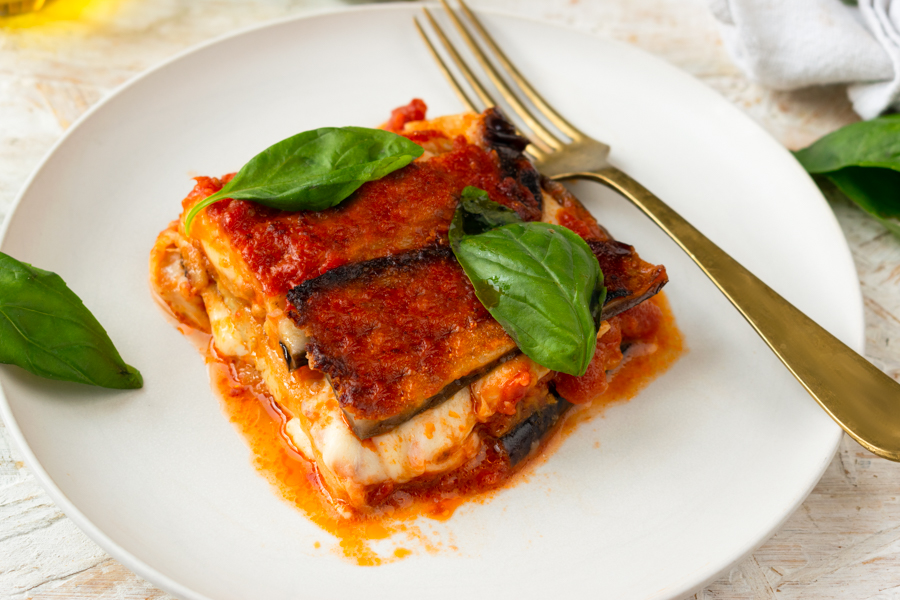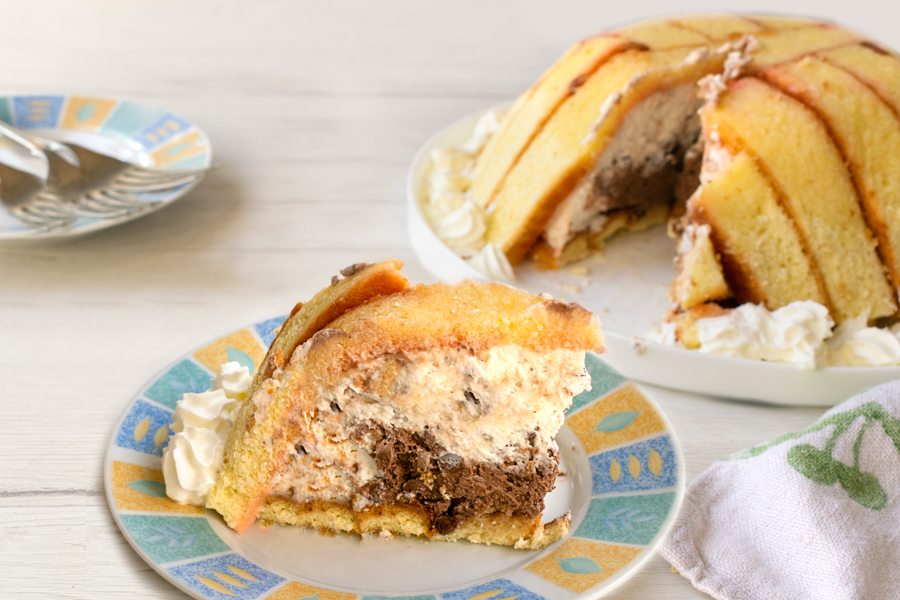This classic coffee panna cotta recipe is a sweet, creamy, caffeinated treat that any coffee lover will adore. With few ingredients, it’s easy to make the perfect dessert.
You’re a coffee lover who can’t get enough of that sweet, fragrant, caffeine-packed elixir of life. But you’ve had enough of your usual lattes, cappuccinos, and mochas. You’re craving something new, a dessert that really highlights the deep, rich flavor of coffee. Get ready to master the classic coffee Panna Cotta recipe in no time. This creamy, smooth, silky sweet treat will satisfy any coffee addict’s cravings.
Master the Classic Coffee Panna Cotta recipe in no time
With just a few simple ingredients like coffee, heavy cream, sugar and gelatin, you’ll have a decadent dessert that’s so easy to make, you’ll be whipping it up for every get-together. The best part? The entire recipe takes less than 10 minutes, then you just have to wait patiently for it to set in the fridge. So you can easily prepare it the day before…. So put on your chef’s hat and let’s get cooking. This luscious, coffee-flavored Panna Cotta is calling your name!
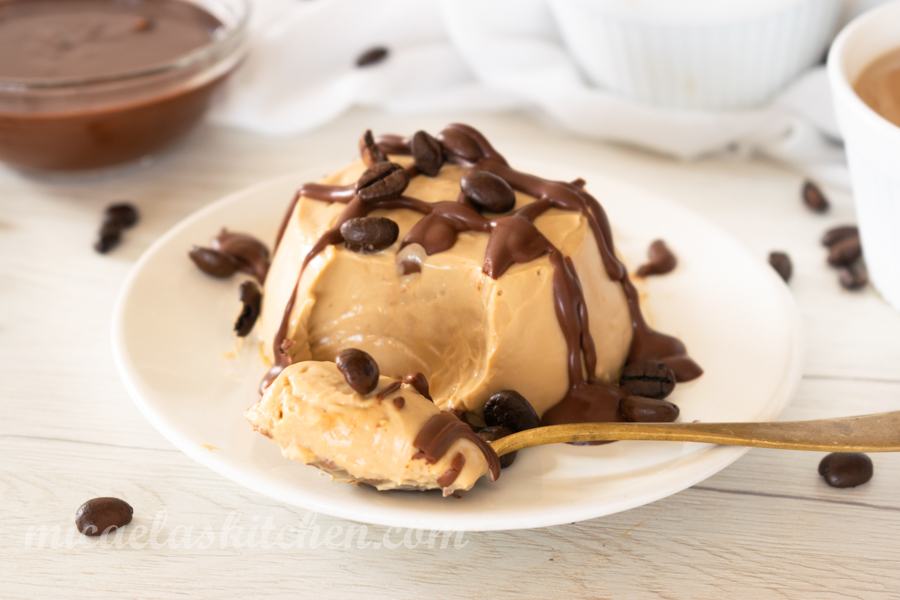
Coffee Panna Cotta Ingredients:
To make Coffee Panna Cotta, you will need the following ingredients:
- 230 ml (¾ cup plus 3 tbsp) strong unsweetened coffee
- 8 g (1 tbsp) gelatin sheets or 12 g (1 tbsp plus 1 tsp) gelatin powder, unflavored
- 500 ml (2 cups plus 1 tbsp) heavy cream
- 100 g (½ cup) granulated sugar (or a keto sweetener: read below)
- ½ teaspoon pure vanilla extract
- 100 g (3½ oz) dark chocolate
- Chocolate coffee beans to decorate (optional)
How to Make a Keto Version of Panna Cotta
Panna cotta is a luscious Italian dessert known for its silky texture and delicate flavors. Traditionally made with cream, sugar, and gelatin, it may seem challenging to create a keto-friendly version of this dessert. However, with a simple substitution, you can enjoy a delicious low-carb panna cotta that fits perfectly into your keto lifestyle. Just replace sugar with a keto sweetener and you will create a delectable panna cotta that is both delicious and suitable for your keto diet.
How to Make a Dairy-free Version of Panna Cotta
If you prefer a dairy-free option, you can replace the heavy cream with full-fat coconut milk. The result will still be a creamy and delicious dairy-free panna cotta.
Do I Need to Use Heavy Cream, or Can I Substitute With Milk?
Heavy cream or whipping cream (at least 36% milk fat) is traditionally used to make panna cotta silky and creamy. Whole milk or half-and-half will produce a lighter, milkier result. For the creamiest panna cotta, use all cream. For a lighter version, substitute some of the cream for milk.
Can I add other flavorings to Coffee Panna Cotta?
Coffee Panna Cotta pairs well with many mix-ins and toppings. Add a splash of rum, Kahlúa or other coffee liqueur for a boozy kick. Swirl in chocolate shavings or cocoa powder for a mocha panna cotta. Top with whipped cream, chocolate sauce, caramel sauce, fresh berries or candied nuts. Get creative!
How to Make Perfect Coffee Panna Cotta
Coffee Panna Cotta Video Recipe:
To master this classic Italian dessert, just follow these simple steps:
Make the coffee
Since we’re talking about a classic Italian dessert here, you’re gonna want to do the coffee the classic way – using a Moka pot. But if you don’t have one of those, coffee from a machine or instant will work too. The most important thing is that the coffee is bold and unsweetened. This will infuse the panna cotta with rich coffee flavor.
Bloom the gelatin
In a bowl, soak the gelatin in cold water for about 10 minutes. If you are using gelatin powder, dissolve it in a small amount of cold water, following the instructions on the packaging.
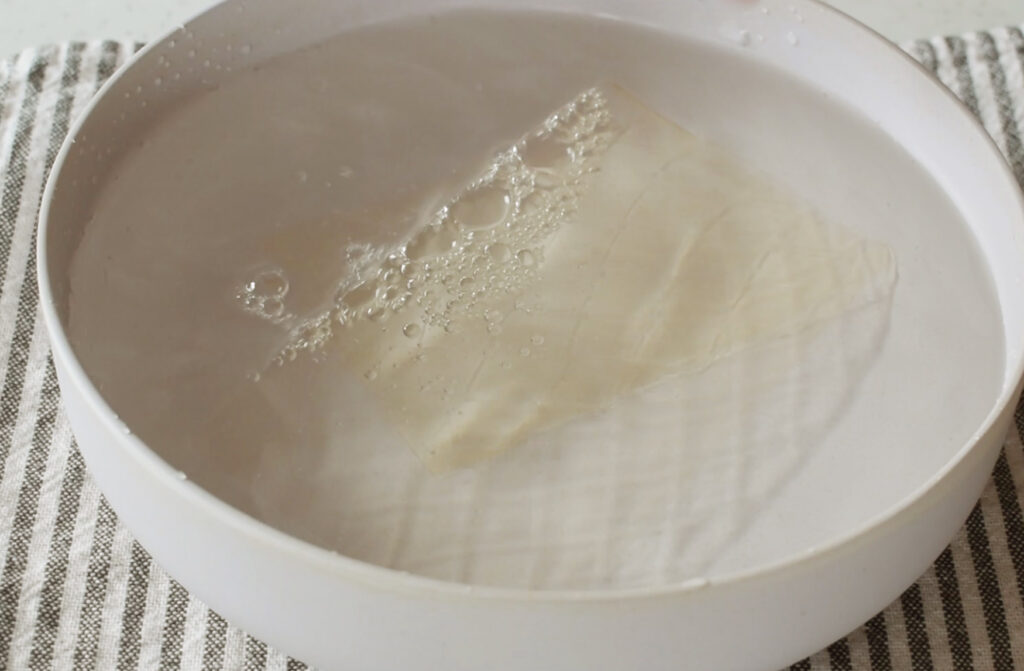
Heat the cream
In a saucepan, combine heavy cream, sugar, and vanilla extract. Warm over medium heat, stirring frequently, until sugar has dissolved. Do not boil.
Add the gelatin and coffee
When the cream is about to boil, turn off the heat. Squeeze the soft gelatin and add it to the cream. If you’re using powdered gelatin, sprinkle it over the cream. Add 150 ml of coffee and mix well, until gelatin has dissolved completely.
Strain and chill
Strain the mixture through a fine mesh strainer and distribute what you get evenly among 6 molds with an approximate capacity of 125 ml each.

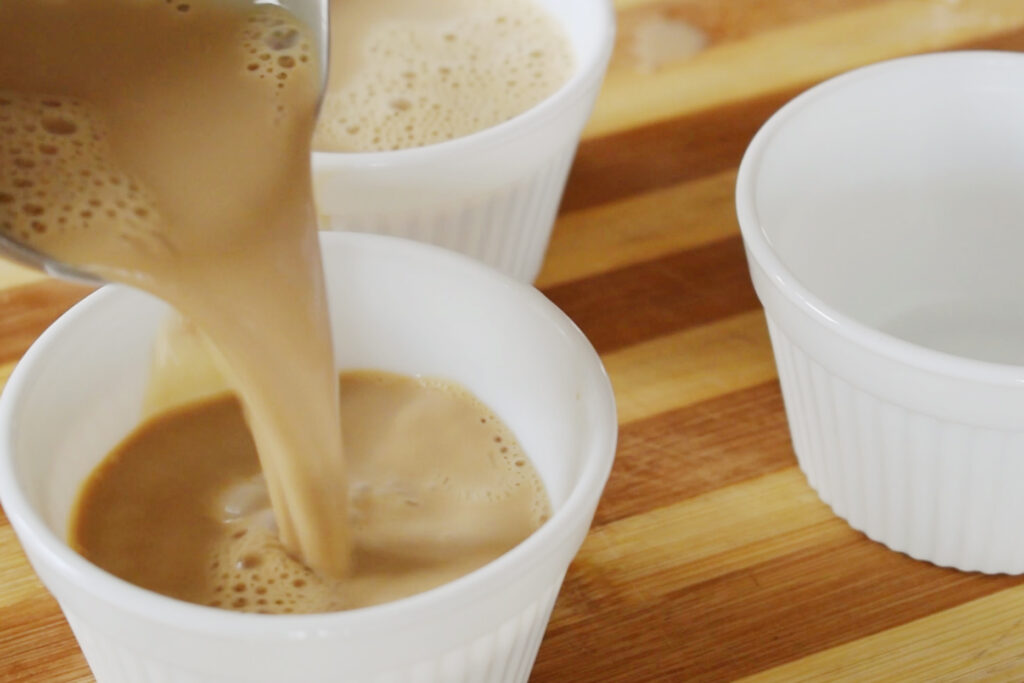
Allow to cool to room temperature, then cover and refrigerate until fully set, at minimum 6 hours.
Prepare the Chocolate Coffee sauce
About 15 minutes before serving the panna cotta, make the sauce. Melt the dark chocolate either in a bain-marie or microwave. Then add 80 ml of hot coffee (This is the coffee you made earlier. You can heat it in the microwave or in a saucepan) and mix it all together until you get a sauce that’s runny but not super liquidy.
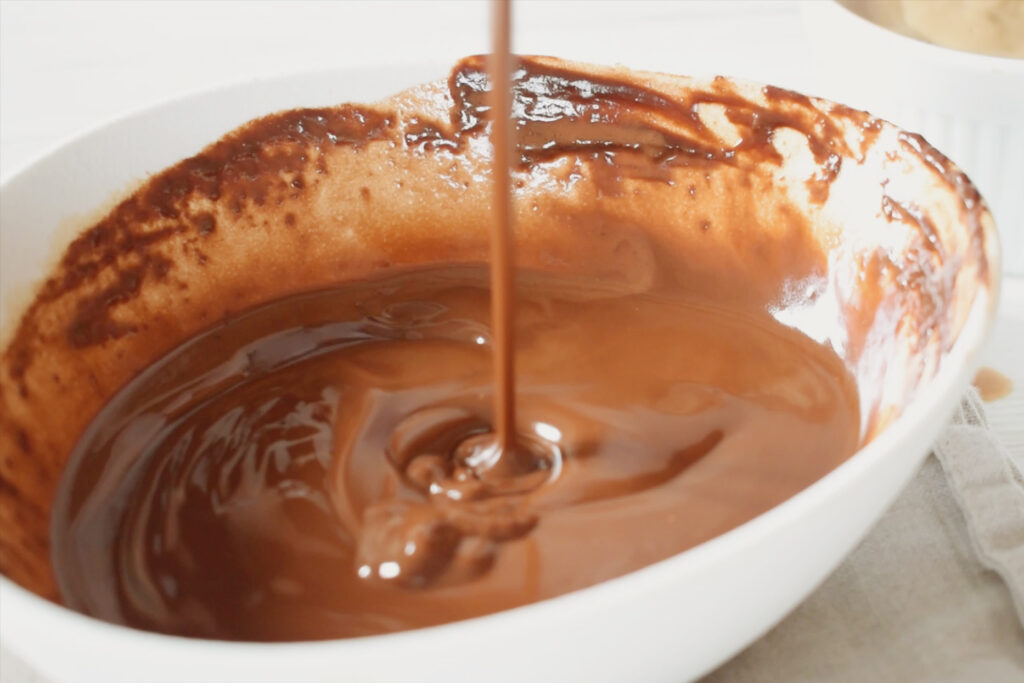
Serve coffee Panna Cotta
When you’re ready to serve the panna cotta, take a knife and run it around the edge of the mold with the blade dipped in boiling water. Do this all the way around, but don’t go too deep with the knife. Then dip the whole mold in boiling water for a second before flipping it upside down onto your serving plate. If the panna cotta is sticking at all, you can insert the knife blade a little to get rid of any suction.
Once it’s unmolded, drizzle the coffee chocolate sauce over the top. And if you have any chocolate coffee beans, feel free to scatter those around too. Serve immediately.
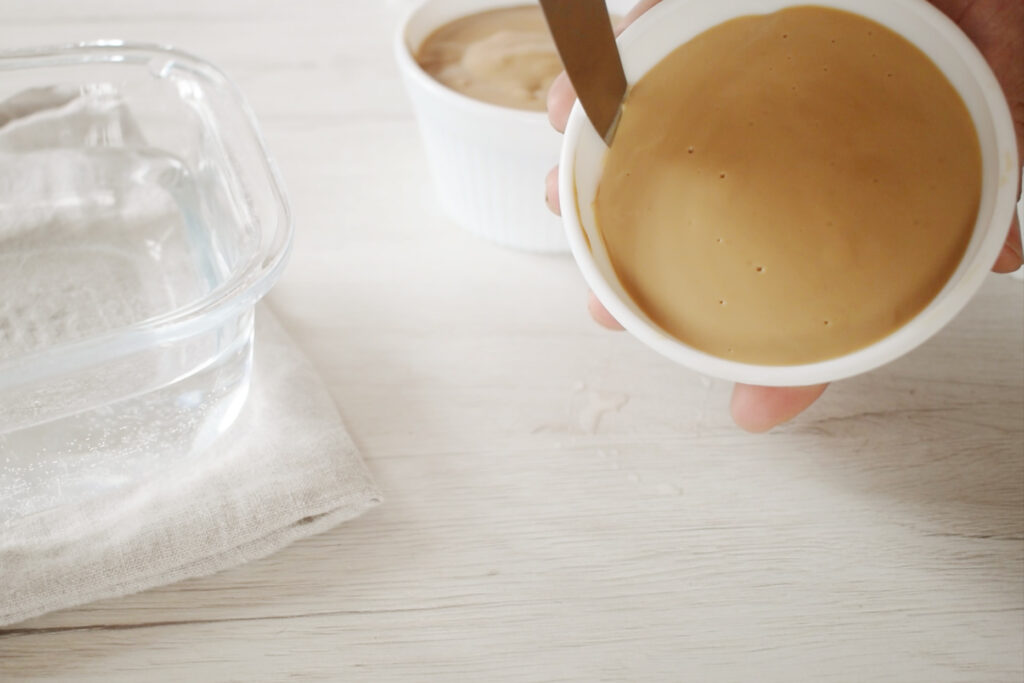
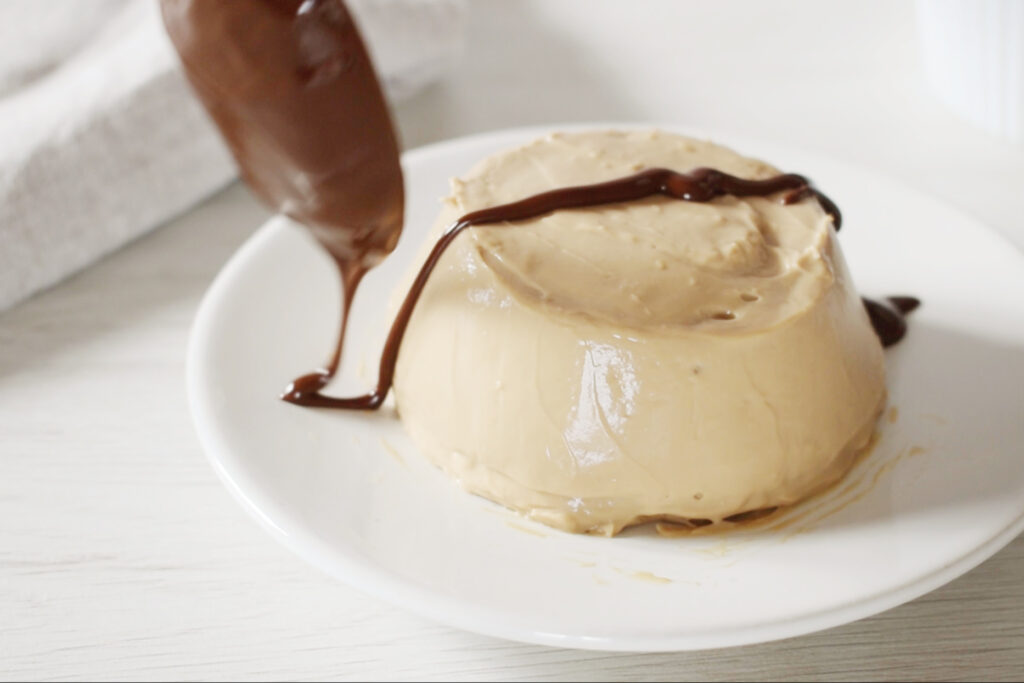
How Long Does Panna Cotta Need to Chill Before Serving?
Panna cotta needs several hours to chill in order for it to set completely. After pouring into serving dishes, refrigerate for at least 4 hours or up to 2 days. For easier unmolding, chill for 6 to 8 hours. The panna cotta will continue to firm up as it chills, so don’t be alarmed if it seems a bit loose after only a few hours.
Which Mold Can I Use for Panna Cotta?
When making Panna Cotta, you can use various molds depending on your preference and the presentation you desire. Here are a few common options:
- Ramekins: Ramekins are small ceramic or glass dishes that are often used for individual servings of Panna Cotta. They are easily available and can create a classic and elegant presentation.
- Silicone Molds: Silicone molds are flexible and come in various shapes and sizes. They are convenient to use as they allow for easy removal of the Panna Cotta without the need for greasing or dipping in hot water.
- Muffin Tins: If you want to make Panna Cotta in a larger batch or prefer a more rustic presentation, you can use muffin tins. Simply line the cups of the muffin tin with plastic wrap or parchment paper for easy removal.
- Panna Cotta Molds: these molds are excellent for panna cottas, they have a lid, they can be stored in the refrigerator and the panna cotta can be removed very easily.
Tips for Making the Creamiest Coffee Panna Cotta
To get that melt-in-your-mouth creamy texture, follow these tips:
- Use high quality heavy cream with a fat content of at least 36%. The higher the fat, the creamier the result.
- Heat the cream gently. Slowly heating the cream over low heat, stirring frequently, until it’s hot to the touch prevents the dairy from curdling.
- Strain the mixture. For an ultrasmooth and creamy panna cotta, strain the mixture through a fine mesh strainer after blending in the gelatin.
- Chill thoroughly. Allowing the panna cotta to chill for at least 6 hours, ideally overnight, gives the gelatin plenty of time to set and thicken the Panna Cotta to a deliciously creamy consistency.
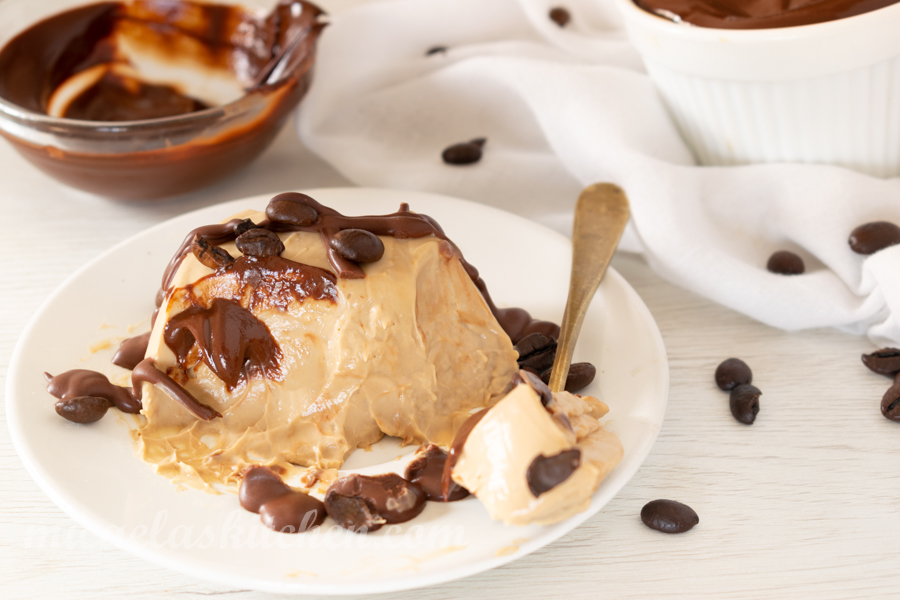
Why my Panna Cotta Doesn’t Set Properly?
There could be a few reasons why your Panna Cotta is not solidifying properly. Let’s troubleshoot some common issues:
Gelatin Quantity: Panna Cotta relies on gelatin to set and achieve its creamy, firm texture. If you’re using gelatin sheets, make sure you’ve used the correct amount according to the recipe. If you’re using powdered gelatin, ensure that you’ve properly measured and dissolved it in liquid before adding it to the mixture.
Gelatin Activation: Gelatin needs to be properly activated before it can set. If you’re using gelatin sheets, soak them in cold water for a few minutes until they become soft, then squeeze out any excess water. If you’re using powdered gelatin, dissolve it in a small amount of cold water, following the instructions on the packaging.
Heating the Mixture: When heating the Panna Cotta mixture, it’s important to bring it to a gentle simmer or just below boiling point. Avoid boiling the mixture, as excessive heat can weaken the gelatin’s setting ability. Stir the mixture constantly to ensure the gelatin is fully dissolved.
Cooling Time: After removing the Panna Cotta mixture from the heat, allow it to cool slightly before pouring it into the molds. Pouring hot mixture directly into the molds can cause the gelatin to break down and prevent proper setting. Once poured, refrigerate the Panna Cotta for a few hours or overnight to allow it to fully set.
Gelatin Quality: The quality and strength of gelatin can vary between brands. If you consistently have issues with your Panna Cotta not setting, try using a different brand of gelatin or adjust the quantity according to the manufacturer’s instructions.
If you’ve checked these factors and are still experiencing issues, it may be helpful to review your recipe and method to ensure you’re following the instructions accurately. Panna Cotta is a delicate dessert, and slight variations in ingredients or technique can affect the final result. Don’t be discouraged and keep experimenting until you achieve the perfect consistency.
With these useful tips, you’ll be whipping up divinely creamy coffee panna cotta in no time. Your guests will surely be wowed at how you’ve mastered this classic Italian dessert! Let me know if you have any other questions!
Coffee Panna Cotta Storage Instructions
The panna cotta can be stored in the refrigerator for up to two days. Additionally, it can be frozen for approximately 3 months and thawed in the refrigerator prior to consumption.
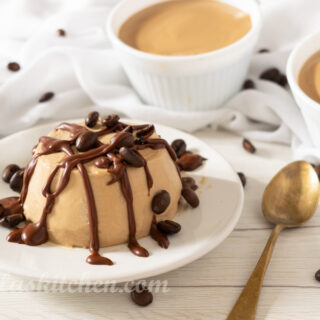
Coffee Panna Cotta: A Classic Creamy Italian Dessert
Equipment
- 6 Panna cotta mold of about 125 ml (4oz)
Ingredients
- 230 ml coffee divided
- 8 g gelatin sheets or 12 g gelatin powder, unflavored
- 500 ml heavy cream
- 100 g sugar
- ½ teaspoon vanilla extract
- 100 g dark chocolate
- Chocolate coffee beans to decorate (optional)
Instructions
- Prepare the coffee using a Moka pot for an authentic flavor. But if you don’t have one, coffee from a machine or instant will still work. The important thing is that the coffee is bold and unsweetened.
- Soak the gelatin in cold water for about 10 minutes. If using powdered gelatin, dissolve it in some cold water as the package says.
- In a saucepan, heat heavy cream, sugar and vanilla extract over medium until the sugar dissolves, stirring frequently. Don't let it boil.
- When it's almost boiling, turn off the heat. Squeeze the gelatin and add it to the cream. If using powdered gelatin, sprinkle it over the cream. Now add 150 ml of coffee and mix until the gelatin fully dissolves.
- Pour the mixture through a fine mesh strainer evenly into 6 molds that hold about 125 ml each. Let cool to room temperature, then cover and refrigerate for at least 6 hours until set.
- About 15 minutes before serving, make the sauce. Melt the dark chocolate either over a water bath or in the microwave. Then add 80 ml of hot coffee and mix until runny but not too thin.
- When ready to serve, run a knife around the edge of each mold with the blade dipped in boiling water. Do this all around but don’t go too deep. Then dip the whole mold in boiling water briefly before flipping upside down onto a plate. Use the knife if any are stuck.
- Once unmolded, drizzle the coffee chocolate sauce over the top. Feel free to scatter some chocolate coffee beans around too if you have them. Enjoy!


